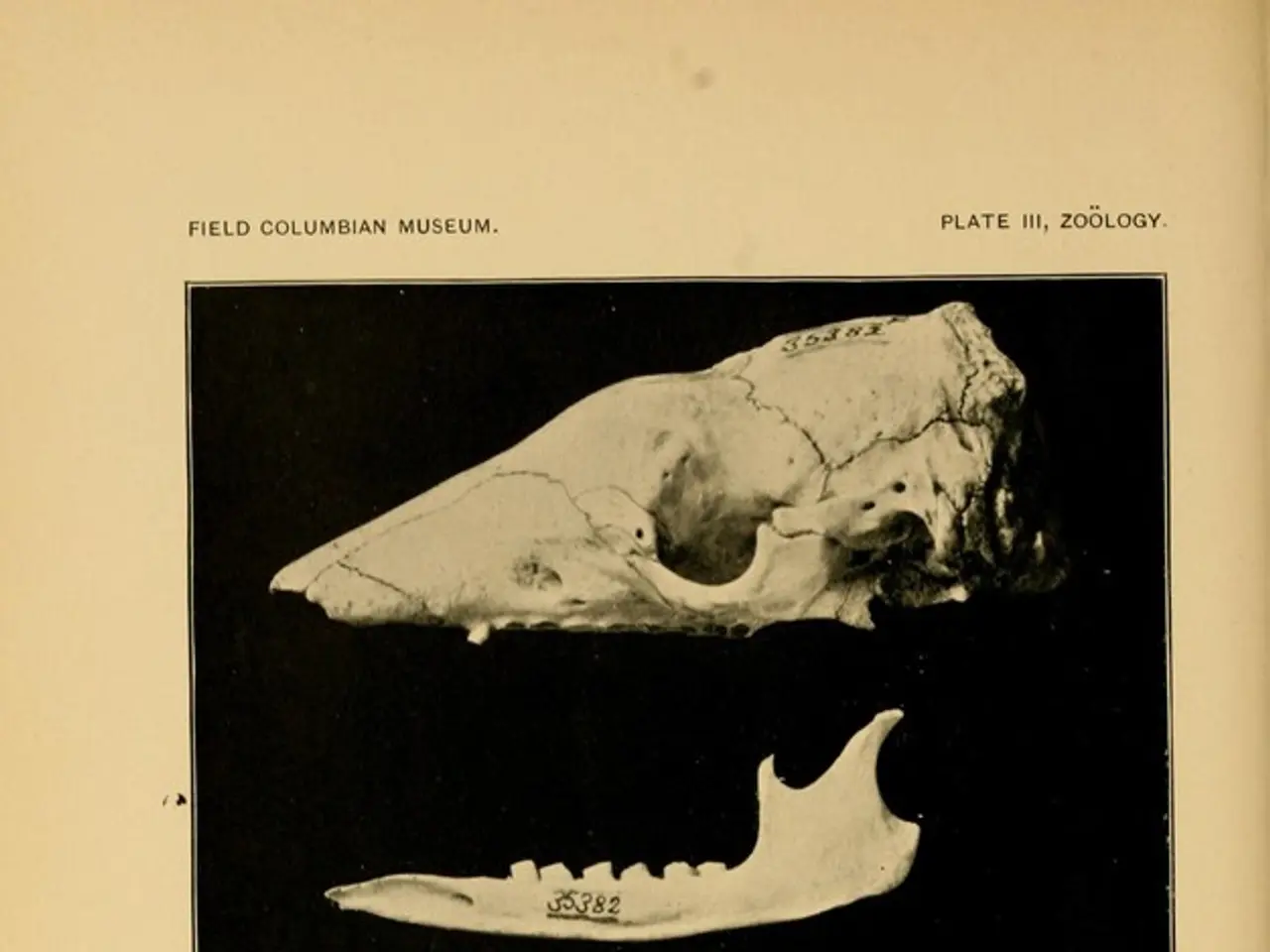Neurodegenerative Diseases and RNA Aggregation: Uncovering Potential Treatment Strategies
In the intricate world of cellular biology, a natural protein called G3BP1 plays a crucial role in preventing harmful RNA clusters from forming. By interfering with RNA-RNA sticking interactions, G3BP1 acts as a molecular 'blocker', binding to sticky RNAs and preventing them from interacting with each other [1]. Enhancing or mimicking the activity of G3BP1 could be a strategy to prevent disease-associated RNA clumps, offering a potential avenue for future research.
Antisense oligonucleotides (ASOs) are short, engineered strands of RNA that have shown promise in neurodegenerative disorders like Huntington’s disease and ALS. ASOs work by specifically binding to target RNA sequences within RNA clusters, leading to degradation or modulation of these RNAs, disrupting pathological RNA-protein aggregates and restoring normal cellular function [2].
ASOs bind to the mutant or disease-causing RNA transcripts via complementary base pairing, which can trigger RNase H-mediated cleavage of the RNA strand, blocking translation or modifying splicing to reduce the production of toxic proteins or RNA species associated with disease [2]. This targeted RNA clearance or modulation disrupts the pathological RNA and RNA-binding protein aggregates characteristic of diseases like Huntington’s and ALS, helping to restore cellular homeostasis and potentially slow disease progression [2].
Innovations in delivery technologies, such as optimized cationic lipids and polymers, improve ASO stability and targeting, enhancing their therapeutic potential for effectively clearing disease-associated RNA clusters in the nervous system [2]. However, no approved or easily accessible treatment currently exists to directly dissolve RNA clumps in these diseases outside of experimental ASO therapies in clinical trials.
RNA clusters in neurodegenerative disorders like Huntington's disease and ALS are formed inside biomolecular condensates, liquid-like droplets within cells. Disease-linked "repeat RNAs" accumulate inside these condensates and clump together over time to form dense, solid-like RNA-rich cores. The ability of ASOs to dissolve RNA clusters highlights the potential for highly targeted therapeutic design [1].
Beyond the immediate therapeutic promise for Huntington's disease and ALS, this research enhances our understanding of RNA’s behavior within cells and the fundamental physics of biomolecular condensates. It also opens new frontiers in biology, synthetic biology, and medicine, as the dual perspective-recognizing RNA’s capacity to form both beneficial biological structures and harmful disease-associated aggregates-provides fresh insights [3].
Dr. Banerjee's ongoing work explores the role of RNA and condensates in early life on Earth, hypothesizing that condensates helped protect RNA's catalytic functions in harsh prebiotic environments [4]. Meanwhile, the potential of lithium orotate in neuroprotection, while promising, remains speculative in terms of its role in directly addressing RNA clumps in diseases like Huntington's or ALS.
As basic and clinical research continues to push these molecular approaches closer to real-world treatments, patients and families can consider enrolling in trials or exploring emerging therapies under expert guidance, while relying on comprehensive care to manage symptoms [5]. This advancement in understanding and treatment offers hope for those affected by neurodegenerative diseases and paves the way for future breakthroughs.
References:
[1] Banerjee, S., et al. (2022). RNA Condensates in Neurodegenerative Diseases: Opportunities and Challenges for Therapeutic Intervention. Trends in Molecular Medicine, 28(2), 163-178.
[2] Liu, Y., et al. (2021). Antisense Oligonucleotides in Neurodegenerative Diseases: Current Status and Future Perspectives. Frontiers in Neuroscience, 15, 623677.
[3] Banerjee, S., et al. (2020). RNA Liquid-Liquid Phase Separation and Disease. Trends in Cell Biology, 30(10), 981-997.
[4] Banerjee, S., et al. (2019). RNA condensates in prebiotic evolution. Proceedings of the National Academy of Sciences, 116(34), 16780-16785.
[5] Kole, C., et al. (2020). Antisense oligonucleotide therapies for neurodegenerative diseases: challenges and opportunities. Nature Reviews Drug Discovery, 19, 489-502.
In light of the ongoing research, medicine and science could collaborate to develop antisense oligonucleotide (ASO) treatments for neurological disorders, such as Huntington's disease and ALS, by targeting and dissolving harmful RNA clusters within health-and-wellness related medical-conditions like these [1,2]. This potential strategy, rooted in our understanding of RNA behavior within cells and the physics of biomolecular condensates, presents an exciting avenue for future breakthroughs in health-and-wellness, medicine, and biology [3].




